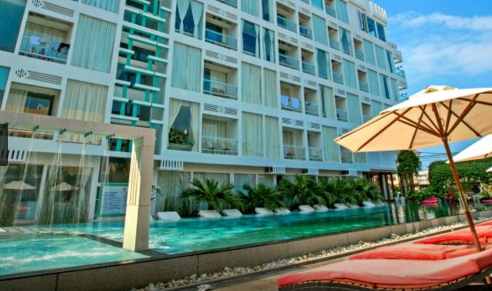A PORTRAIT OF CAMBODIA
Emerald paddy fields, a rich diversity of wildlife, powder-fine beaches, and the magnificence of the temples of Angkor –
Cambodia has an alluring mix of romantic escapes and exhilarating outdoor pursuits, as well as world-renowned archaeological wonders. All this, combined with the warmth of its people, have helped put the country firmly on the tourist map.
LAND AND ECOLOGY
Covering an area of 69,900 sq miles (181,035 sq km), Cambodia is bor dered by Laos to the north, Thailand to the north and west, and Vietnam to the east. To the
southwest lie the Cardamom Mountains, rising to almost 5,787 ft (1,764 m), while in the north are the dramatic 1,804-ft (550-m) high Dangkrek Mountains. The most dominant feature of the country, however, is the mighty Mekong River, which runs its course from Tibet and floods the Tonlé Sap during the monsoon, swelling its waters to make it the largest freshwater lake in Southeast Asia. The northeast lays claim to being the wildest and most remote region, with forests and mountains inhabited by tigers and wild elephants. In the northwest, fertile Battambang enjoys the sobriquet “the rice bowl of Cambodia.” The south, with its archipelago of deserted islands and perfect beaches, is a pleas-ant tropical retreat and is well worth visiting.
Cambodia’s pristine landscape, forests, and wildlife, however, are underthreat from oil-drilling companies and logging. The habitats of the Asian tiger and other endangered species such as the banteng, wild Asian elephant, and Asian golden cat are visibly shrinking. Deforestation is also contributing to the flooding of the Mekong, while gradual siltation threatens the existence of the Tonlé Sap Lake.
Fortunately, the government is actively promoting conservation with the setting up of several national parks and other areas to protect wildlife and forest cover.
POLITICS AND THE ECONOMY
Cambodia was ranked 166 (out of 180) in the 2008 Corruption Perceptions Index, providing evidence of the limited transparency of its government and the execution of democracy. Official positions are
usually achieved not on merit, but on the power of wealth and nepotism. This is also reflected in the fact that
Hun Sen, leader of the Cambodian People’s Party (CPP), has been at the helm of political affairs since 1993, making him the longest-serving prime minister in Southeast Asia.
Although a multiparty democracy on paper, there was very little opposition in the way the CPP won 72 out of the 123 seats in parliament in the July 2008 elections. Criticism of Hun Sen is seldom heard, especially since dissident media has been silenced.
Despite such pitfalls, the country is making steady headway, with economic growth at around 5 percent.
While oil, rubber, and the availability of cheap labor are fueling this growth, Cambodia has also found a niche as an international garment producer, and tourism remains one of its highest foreign exchange earners.
SOCIETY AND RELIGION
According to official records, Cambodia is the most homogenous country in Southeast Asia, with almost 95 percent of its 15 million people ethnic Khmer.
In reality, however, the population also includes 100,000 Vietnamese, about half a million Chinese and around 250,000 Cham Muslims, as well as the Khmer Lue, the ethnic minorities that live in the northeast.
Khmer society lays stress on the importance of the family. While elders are respected and obeyed, women are expected to be models of restraint and to treat their hus bands with deference. Nevertheless, women are dominant figures in society, providing moral and financial succor to the family. Although fidelity is a given for them, it is normal for husbands to have extramarital affairs – a problem that has led to the country having the highest incidence of HIV infection in Southeast Asia.
While a majority of Khmers today are Buddhists – the religion came from India during the 13th and 14th centuries – Hinduism was the dominant state religion during the Angkor period. Most men spend at least a few weeks in a wat (temple) as a
monk, learning the teachings of Theravada Buddhism. Most ethnic minorities, however, practice animism, while the Chams are followers of Islam.
CULTURE AND THE ARTS
Although all traces of Cambodia’s culture were erased during the years of the Khmer Rouge, the country now seems to have rediscovered its artistic edge, with exiled artists returning to their roots. Traditional dance, particularly ballet, is also making a glorious return through the
University of Fine Arts. Musical instruments such as khsae muoy (single-stringed bowed instrument) and tro khmae (three-stringed fiddle), used by apsara dancers in Angkor, are popular even today. Cambodia is also renowned for its fine silk weaving, silver-smithing, sculpting, wood carving, and
ceramics made in traditional kilns in Siem Reap.
* Please Don't Spam Here. All the Comments are Reviewed by Admin.










